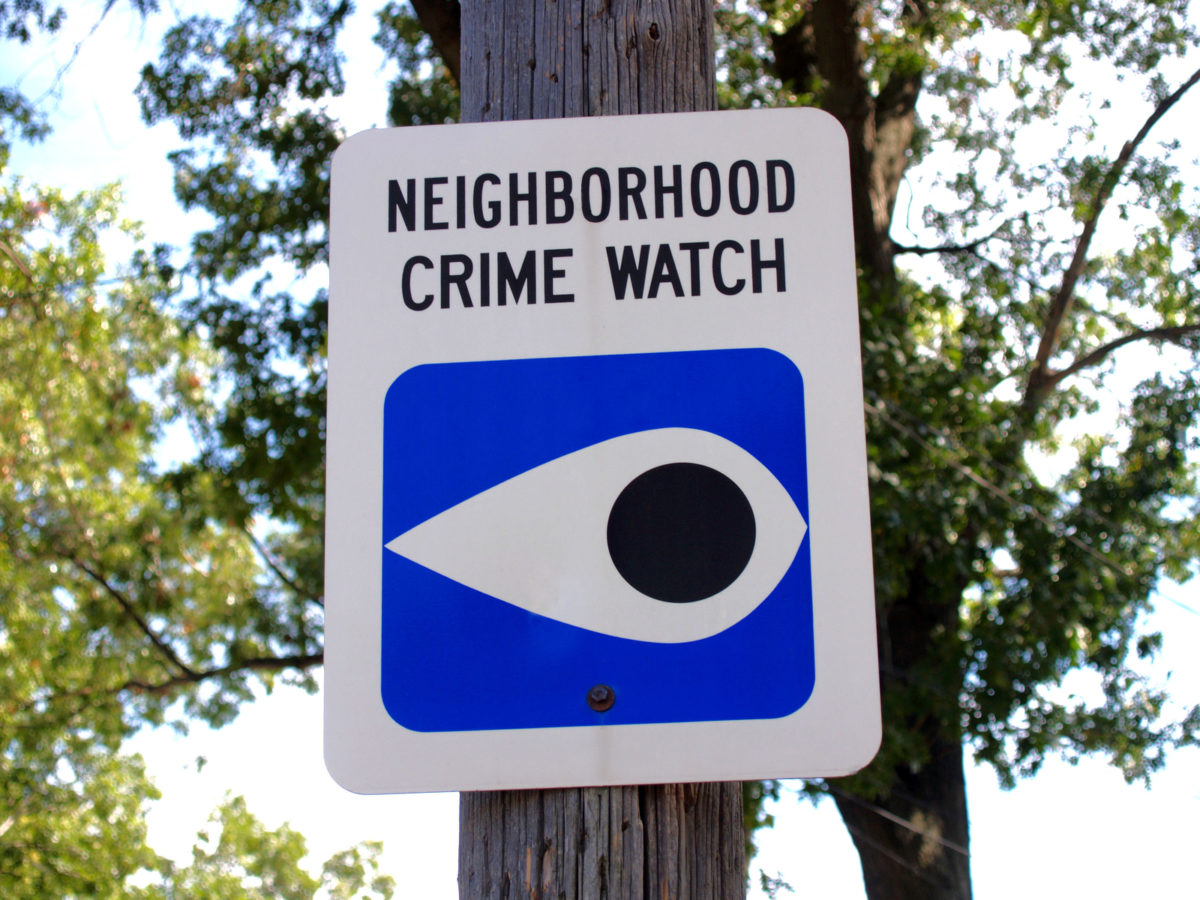Even the safest cities have crime. If this is of concern to you, consider starting a Neighborhood Watch program in your neighborhood.
What it is
A Neighborhood Watch program is made up of a group of people who live in the same neighborhood who have the same goal: Make the neighborhood safe by helping local police to reduce crime.
The groups meet regularly to decide on goals and members are each assigned responsibilities. The Department of Justice refers to Neighborhood Watch groups as “homeland security on a local level.”
A little history
The National Neighborhood Watch program is a product of the National Sheriffs’ Association (NSA) and dates back to 1972.
NSA feels that the program not only allows “citizens to help in the fight against crime, it is also an opportunity for communities to bond through service,” by lending their neighbors a hand in the fight against neighborhood crime.
In 2002, the NSA and USAFreedom Corps, Citizen Corps and the Justice Department came together to launch USAonWatch. Calling it a “revitalized” Neighborhood Watch program, it expands the role of these groups by empowering “citizens to become active in homeland security efforts through participation in Neighborhood Watch groups.”
Success stories
When implemented correctly, Neighborhood Watch programs are quite successful. The devil, however, is in the details when it comes to implementation.
A 2008 report by the U.S. Department of Justice (which is a huge backer of the program, by the way) finds that only 5 percent of the watch programs actually reduce crime in a neighborhood.
But, there is anecdotal evidence of the program’s success from across the country. In 2010, for instance, a town in Georgia was experiencing a series of auto break-ins. The neighborhood watch programs put out an alert for residents to keep their eyes open for suspicious activity and, within days, the perpetrator was arrested.
In 2012, Las Vegas Metro representatives issued a statement claiming that residential burglaries, auto burglaries and auto thefts declined by 30 percent and they gave the credit for that to the valley’s 625 Neighborhood Watch programs.
How to do it right
So, if you’re aim is to set one of these programs in motion in your neighborhood and hope that it’s successful, do it right from the beginning.
Expect for it to be slow going at the start, but it will pick up steam as more neighbors decide to get involved. It’s not a hands-off endeavor but, if it works, it is immensely worthwhile.
The steps to take to form a Neighborhood Watch Group
1.Talk to and recruit your neighbors — Tell them of your plans and how it will benefit them.
2.Contact the local police department — Schedule a meeting of interested neighbors and issue an invitation to a police department representative to attend. NSA claims that this is one of the most important steps because “Neighborhood Watch is a cooperative effort” between citizens and law enforcement.
If you can’t get a police department representative to attend the first meeting, open it to discussions of concerns in the neighborhood and the creation of an agenda on how you’ll meet these concerns.
The NSA has numerous resources on its website to help. You’ll find them at nnw.org.
3. Determine how you’ll communicate with one another — Find a communication method that works for the group, whether that is through regular meetings, on social media, via text messaging or a combination of several.
Call your local police department if you’d like more information on how you can work with them. They’re happy to send you a Neighborhood Watch start-up packet and provide whatever other assistance you need to start your program.

